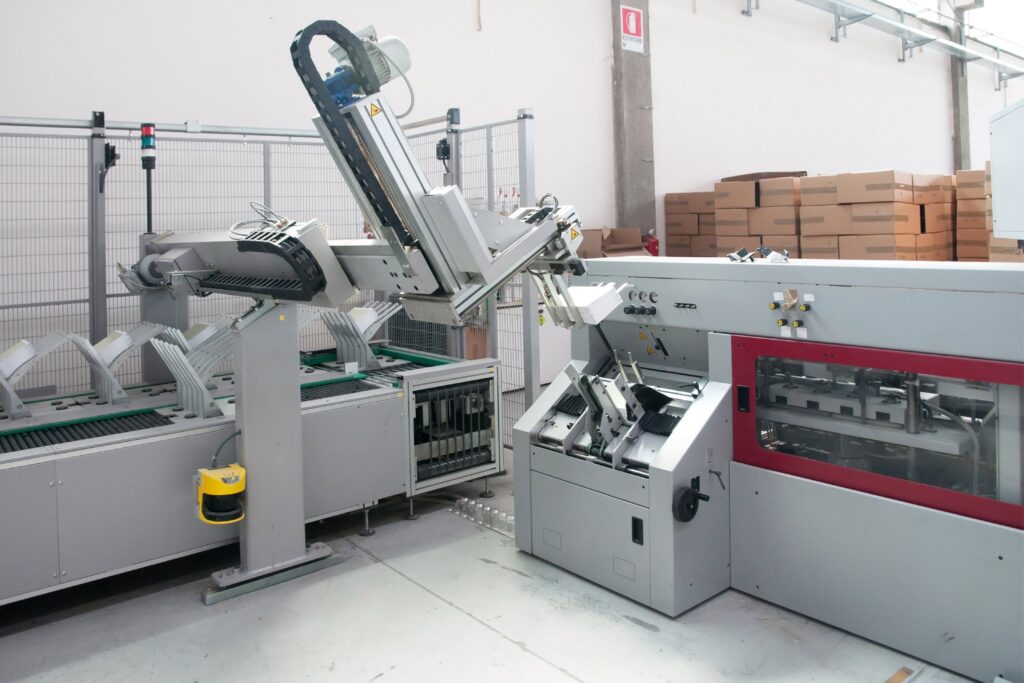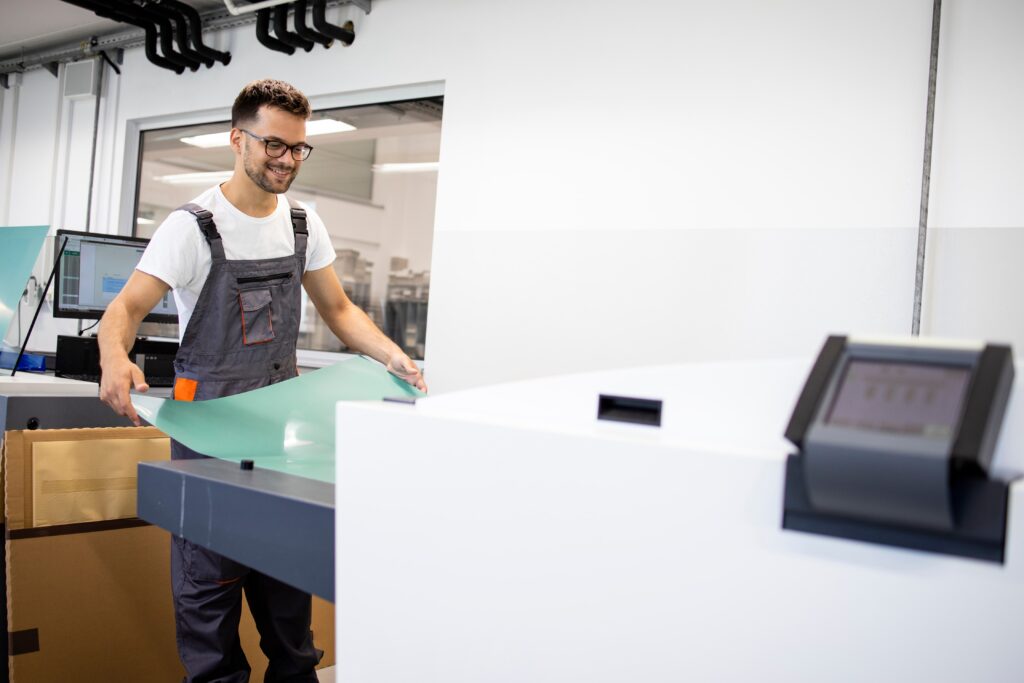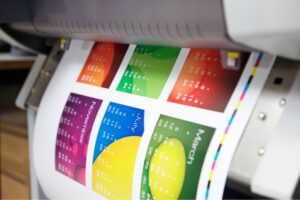The Future Of Printing: Trends And Innovations In The Print Shop Industry
7 min read
In today’s digital age, the print shop industry may seem outdated and irrelevant. But is it really? The future of printing is far from bleak, with new trends and innovations constantly reshaping the industry.
Printing has come a long way since Johannes Gutenberg invented the printing press in the 15th century. From offset printing to digital printing, the industry has adapted and evolved to meet the changing demands of consumers and businesses alike.
While digital media may have taken center stage, there is still a strong demand for printed materials. From personalized marketing materials to high-quality packaging, the print shop industry continues to play a vital role in various sectors. In this article, we will explore the latest trends and innovations that are shaping the future of printing, and how it is far from being a dying industry.
Current State of the Print Shop Industry
The print shop industry is a subset of the larger printing industry, which has seen significant changes due to advancements in technology, especially digital graphic printing. The traditional printing industry primarily involved large-scale printing of newspapers, books, and other mass-produced materials. However, with the rise of digital printing, the print shop industry has become more versatile and accessible to small businesses and individuals.
Key players in the print shop industry include commercial printing companies, online print service providers, and local print shops. These players offer a wide range of services, including business cards, brochures, flyers, posters, banners, and promotional materials. They also provide customization options, such as personalized invitations and stationery, as well as additional services like graphic design and print finishing.
Digital graphic printing has had a significant impact on various sectors within the print shop industry. For instance, the marketing and advertising sector benefits greatly from digital printing technology, as it allows for cost-effective and quick production of marketing materials. Similarly, the events and promotions sector utilizes digital graphic printing to create eye-catching banners and posters for various events.
In recent years, there has been a growing trend towards green and sustainable printing. This involves using environmentally friendly materials, such as recycled paper and soy-based inks, and adopting energy-efficient printing practices. Many print shops have embraced this trend to cater to environmentally conscious customers and reduce their carbon footprint.

Technological Developments in Printing
Technological Developments in Printing have revolutionized the way we produce and consume printed materials. From the advent of Gutenberg’s printing press to the modern digital printing technologies, the field of printing has evolved significantly, becoming faster, more efficient, and more versatile.
Digital Technology
Digital technology has been rapidly integrating with the printing industry in various ways, revolutionizing the way content is consumed and produced. The use of online content has allowed print materials to reach a broader audience. Digital platforms provide opportunities for publications to engage with readers through interactive elements, such as video or audio clips, hyperlinks, and social media integration. This integration not only enhances the reader’s experience but also drives online traffic to the print material.
Another integration is tactile elements, where digital technology combines with traditional printing to create a more engaging and interactive experience. For example, augmented reality (AR) allows readers to scan printed materials with their smartphones or tablets to reveal additional digital content, such as videos or 3D models. This integration of physical and digital elements adds longevity to print materials, making them more timeless and appealing to readers.
Print remains relevant in the future by leveraging these integrations to drive online traffic. Online platforms offer endless possibilities for expanding readership beyond traditional boundaries. By providing online-exclusive content and driving readers to access it through print materials, publishers can capture the attention of a wider audience and utilize the power of both digital and print platforms.
Digital technology is also transforming the printing process itself. Smaller and more efficient presses make printing more cost-effective and accessible to smaller publishers. Additionally, the advent of 3D printing has opened up new possibilities for customizing and personalizing print materials, such as creating unique covers or intricate designs.
One of the most significant transformations in the print industry is the rise of digital printing. With its ability to produce high-quality prints on demand, digital printing is projected to grow significantly compared to traditional analog printing methods. Its flexibility and cost-effectiveness make it an attractive option for small print runs, personalized prints, or variable data printing.
Adoption of 3D Printing
3D printing has rapidly gained popularity across different sectors due to its numerous benefits and advantages. One of the key benefits of 3D printing is its ability to simplify the creation of complex objects. Traditional manufacturing methods often struggle with intricate designs, but 3D printing allows for the production of complex shapes with ease. This simplification process not only saves time and effort but also reduces costs.
Furthermore, the adoption of 3D printing has led to an increased market size and growth rate of the industry. According to market research, the global 3D printing marketing is expected to reach $40.8 billion by 2024, with a compound annual growth rate of 26.4%. This growth can be attributed to the versatile nature of 3D printing, which finds applications in various sectors such as healthcare, automotive, aerospace, and consumer goods.
In the trade show industry, 3D printing has had a significant impact by revolutionizing the way exhibitors present their products. With 3D printing, companies can create realistic and detailed prototypes of their products, allowing potential customers to visualize and interact with them. This enhances the overall user experience and helps businesses attract more attention and make a lasting impression at trade shows.
Artificial Intelligence and Automation
Artificial intelligence (AI) and automation have revolutionized the design and printing processes, leading to improved speed, efficiency, and reduced errors. AI refers to the simulation of human intelligence in machines, allowing them to perform tasks that typically require human intelligence. Automation, on the other hand, involves the use of technologies to perform tasks without human intervention.
In the design and printing industry, AI-powered design tools have proven to be game-changers. These tools leverage the capabilities of AI to automate various aspects of the design process. For example, AI algorithms can analyze large amounts of data and generate design options based on user preferences, saving designers valuable time and effort. This not only speeds up the design process but also enhances creativity by providing designers with a wide range of ideas and possibilities.
Automated workflows further enhance efficiency in the design and printing processes. By automating routine tasks such as file formatting, color optimization, and image processing, errors are significantly reduced. Automation also ensures consistency across different design files and eliminates the need for manual intervention, reducing the chances of mistakes.
Use of Advanced Technologies to Enhance Customer Experience
Printing companies can greatly enhance the customer experience by incorporating advanced technologies into their processes. This not only improves efficiency, but also allows for more personalized and innovative products.
One way to enhance the customer experience is through the integration of digital technology with print. By combining traditional print methods with digital platforms, printing companies can create interactive and engaging experiences for their customers. Augmented reality (AR) and virtual reality (VR) technologies are particularly effective in this regard. With AR, customers can use their smartphones or other devices to scan printed materials and access additional digital content, such as videos or 3D models, enhancing their understanding and interaction with the printed material. VR, on the other hand, allows customers to immerse themselves in virtual environments related to the printed content, creating a more immersive and memorable experience.
In addition to these digital technologies, printing companies can also explore the opportunities presented by advanced digital printing technologies, such as 3D printing. 3D printing enables the creation of three-dimensional objects, opening up endless possibilities for innovative applications. For example, a printing company could offer custom-made promotional items, allowing customers to have unique and personalized merchandise. Beyond promotional items, 3D printing can also be used to create prototypes, architectural models, and even medical devices. By repurposing advanced digital printing technologies in creative ways, printing companies can offer unique and personalized products, further enhancing the customer experience.
Growth Drivers for the Print Shop Industry
The print shop industry is experiencing significant growth due to various factors. Technological advancements have played a crucial role in driving this growth. With the introduction of advanced printing equipment and software, print shops are now able to offer high-quality printing services at a faster pace and lower cost. These technological advancements have also made it easier for print shops to handle large-scale printing projects. The ability to efficiently print large volumes of materials has attracted many businesses and organizations to seek their services.
Another growth driver for the print shop industry is the decline of print media. As more people shift towards digital media, traditional print media outlets have experienced a decline in circulation and revenue. However, this decline has created opportunities for print shops to diversify their services. Many print shops have successfully ventured into producing customized promotional materials, packaging, and signage for businesses, helping them to compensate for the decline in demand for traditional print media.
Furthermore, the importance of diversification cannot be overlooked as a growth driver for the print shop industry. Print shops that have diversified their services by offering graphic design, binding, finishing, and other related services have seen significant growth. By expanding their service offerings, print shops can cater to a wider range of customer needs, attracting more clients and increasing their revenue.

Conclusion
In conclusion, the future of printing looks very bright. With the advent of new printing technologies, the print shop industry is sure to evolve and adapt in order to remain competitive. The focus will be on providing increased quality, speed, cost efficiency and customer service. With advances in digital printing, 3D printing, and other cutting-edge technologies, businesses will have more options than ever before when it comes to creating their printed materials. The industry is already experiencing a shift towards more automated processes and increased use of technology, which will likely continue in the years to come. As the world becomes increasingly digital, the print shop industry is sure to rise to the challenge and remain a relevant player in the global market.




